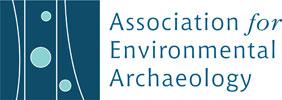Call for proposals - AEA Autumn Conference 2017

Conference abstract
How do we approach today’s great themes in international environmental archaeology? How will this feed into the next research agenda? What are environmental archaeology’s grand challenges? ‘Grand challenges for archaeology’ have recently been proposed to focus the disciplines efforts and capabilities on the most important scientific challenges (Kintigh et al. 2014, PNAS 111, 879-80). Those identified focus on investigating the dynamics of complex socio-ecological systems, addressing key questions of emergence, complexity, demography, mobility, identity, resilience, and human-environment interactions. Environmental archaeology is ideally situated to contribute directly to these challenges, concerned, as it is, with the human ecology of the past – the relationship between past human populations and their physical, biological and socio-economic environments – through the analysis and interpretation of animal and plant remains within the depositional environment of the archaeological site and its surrounds. These approaches allow analysis of the dynamics of socio-ecological systems at varying spatial and temporal scales. Combined with the continued advancement of scientific methodological applications this is enabling increasingly powerful insights into human paleoecology, for example via analyses of palaeodiets, disease ecology, and past climatic change. Particular challenges lie in how to integrate data generated from diverse methodological approaches, and how to model and test cultural and ecological agency in the past, and how to tap the full potential that lies in increasingly large and disparate datasets being generated by the different practitioners of environmental archaeology. Public and fiscal responsibility also challenges environmental archaeological research to contribute to debates of relevance to the modern world, with its important potential insights on human-environment interactions, biodiversity, food security, and societal resilience.
This conference seeks to explore the grand challenge agendas for environmental archaeology that confront its methods, approaches, contributions and relevance, including (but not limited to):
- the ways in which the discipline can contribute to the major research foci of archaeology
- advances in method, and integration of methods, that are permitting more robust and nuanced insights in these areas
- approaches to modelling and testing past socio-ecological relationships, and exploring issues of cause and effect in these systems
- the ways in which environmental archaeological research is relevant and contributes to the contemporary world
The organising committee invites oral and poster presentations that examine these themes. We are particularly keen to encourage comparative research that show how regional case studies can make essential contributions to globally-important questions, or indeed help to shape them and set new agendas for research.
Please send proposals for papers and posters to AEA2017@ed.ac.uk by Friday 29 September 2017. Abstracts should be sent as Word documents, be a maximum of 200 words and contain a clear description of the topic. Please include a title, complete name(s) of author(s), affiliation(s), and full postal and email addresses.
Conference organisers:
Dr Robin Bendrey, School of History, Classics and Archaeology, University of Edinburgh
Professor Andrew Dugmore, School of Geosciences, University of Edinburgh
Dr Eva Panagiotakopulu, School of Geosciences, University of Edinburgh
Dr Xavier Rubio-Campillo, School of History, Classics and Archaeology, University of Edinburgh


